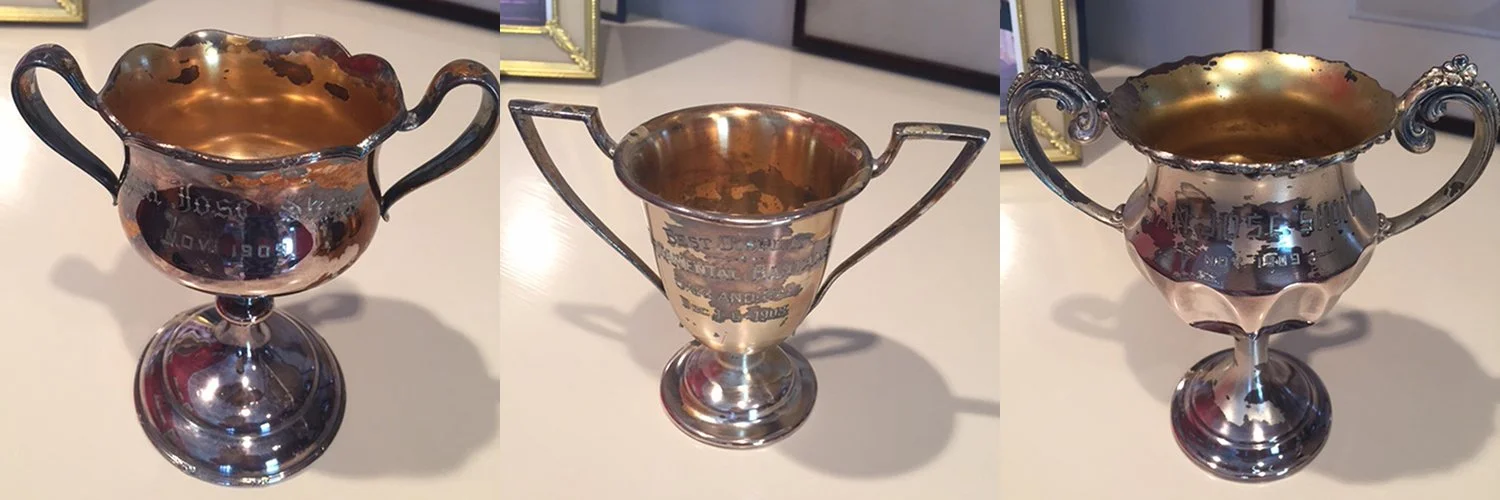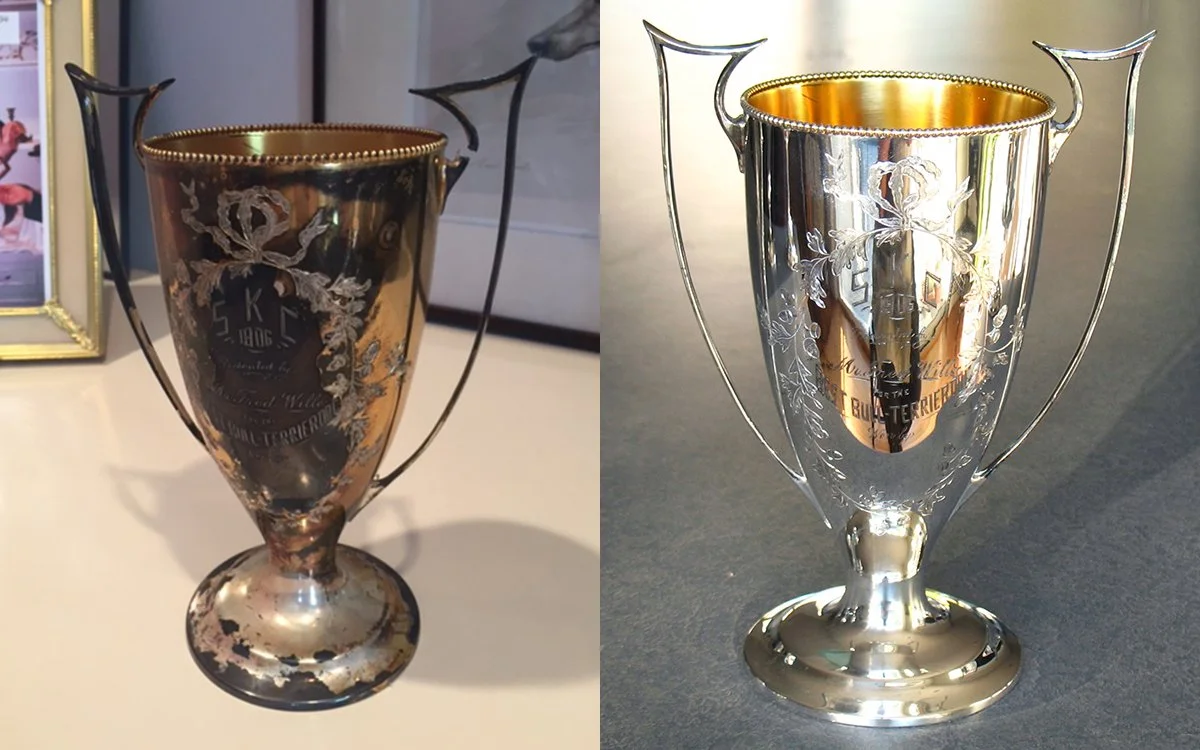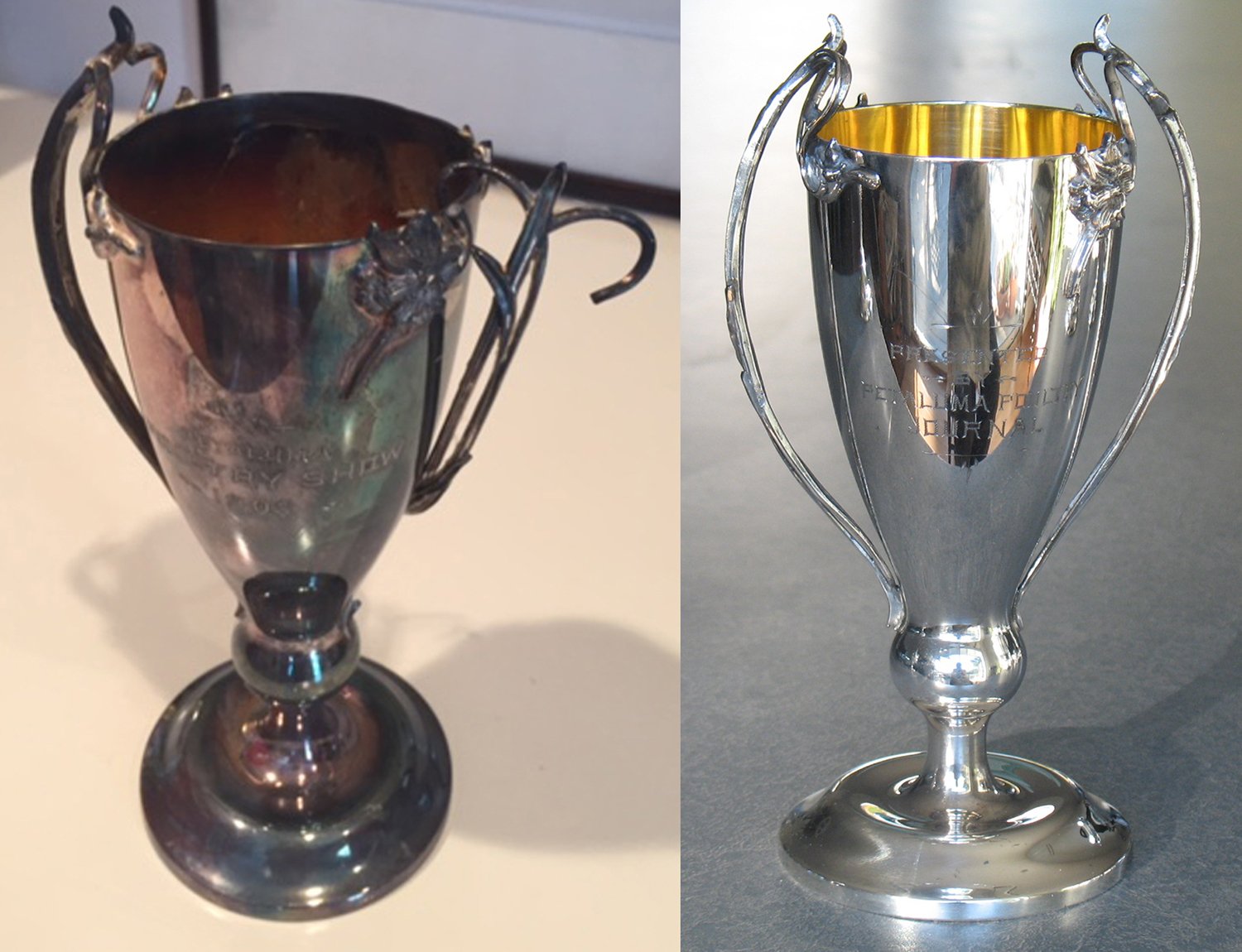Removing Lacquer From Trophies
GREVE TROPHY AIR RACE - REMOVE LACQUER & POLISH
This Louis W. Greve Air Race Trophy was lacquered silverplate but the lacquer was starting to break down causing large areas of black tarnish. In addition, the lacquer was starting to yellow and discolor so that the trophy was no longer a brilliant silver color. The disadvantage of lacquer is that the customer can not polish the trophy themselves.
Removing the lacquer took hours and hours, the biggest challenge was getting it out of the detailed border design. The photo shows the finished result.
This trophy was a truly magnificent historic example of an airplane trophy at 25" in height.
REMOVING OLD LACQUER AND POLISHING
These antique silverplate trophies had gold plated interiors but they arrived so dark and tarnished it was hard to tell how well they would turn out. The lacquer applied to the silverplate had yellowed and started to break down. In addition, two of the handles were broken.
First I removed the lacquer, repaired the handles, and then polished both the inside and outside of the trophies. It was essential to be very careful so that I didn't polish through the plating. With this approach, it was not necessary to re-plate the trophies, saving the customer money. Most important, the original gold plating in this deep rich yellow color would be extremely expensive and hard to replace. The trophies aren't perfect, but I think that when an object is 100 + years old it is part of its character to have a little wear.
The above and below photos show before and after photos of the trophies that needed handle repair. Removing the old lacquer and carefully polishing dramatically improved the appearance of the trophies.




